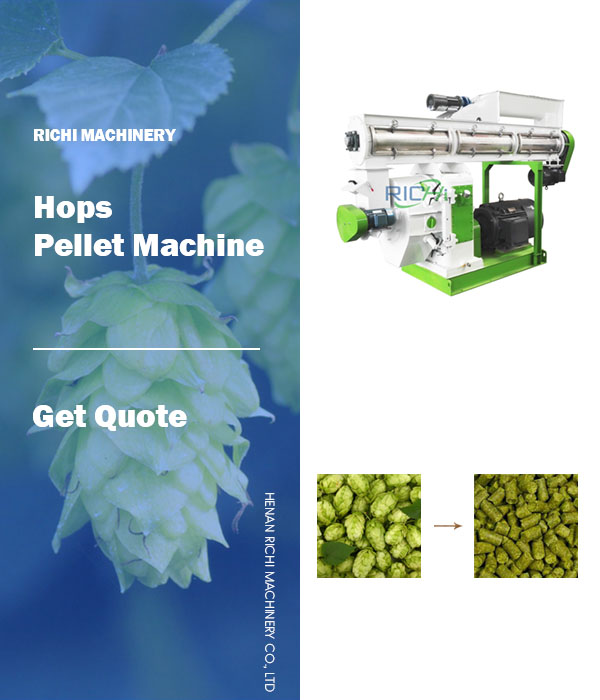Due to the small size of the hop pellets, it not only effectively reduces the contact area with the air, inhibits the oxidation reaction, but also greatly saves storage space and transportation costs.
After being put into the wort, it will dissolve and break, and the contact area with the wort will be greatly increased. In addition, the hop glands of the hop pellets have been damaged, the process of alpha acid alienation will be easier, and the bitterness will increase significantly. Therefore, the utilization rate of hop pellets is better than that of dried hop flowers, generally around 15%.
So how are hop pellets produced?
- The first step in making hop pellets is the drying process.
After you harvest the fresh hops, they need to be dried to remove the excess moisture and preserve the lupulin. There are many ways to dry hops, and these include air drying, sun drying or mechanical drying through a dehydrator. When drying the hops, it is vital to have proper air circulation to encourage equal drying.
- The second step is needed to crush the hops.
The hammer mill swallows the crushed leaves for further processing. The leaves should be broken but not too much such that they turn into powder.
- The third step is the pelletizing process.
The crushed hops enter the hops pellet mill chamber through the feeder. After the physical effects of high speed and high pressure, the hops are squeezed out of the ring die hole by the pressure roller, and finally form cylindrical hops pellets.
- The fourth step is cooling and packaging.
The temperature of the hops that have just formed pellets is very high, and we need to use cooling equipment such as a cooler to cool them to room temperature. When packaging hop pellets, they must be stored in airtight or vacuum containers to avoid oxidation.
The above steps are the simple process of making hop pellets. Of course, a complete hop pellet production line is a complete and complex process. If you want to build a hop pellet production plant, please contact us. RICHI is a professional pellet production equipment manufacturers and exporters, we have rich experience to help you solve your problems.

Comments
Post a Comment